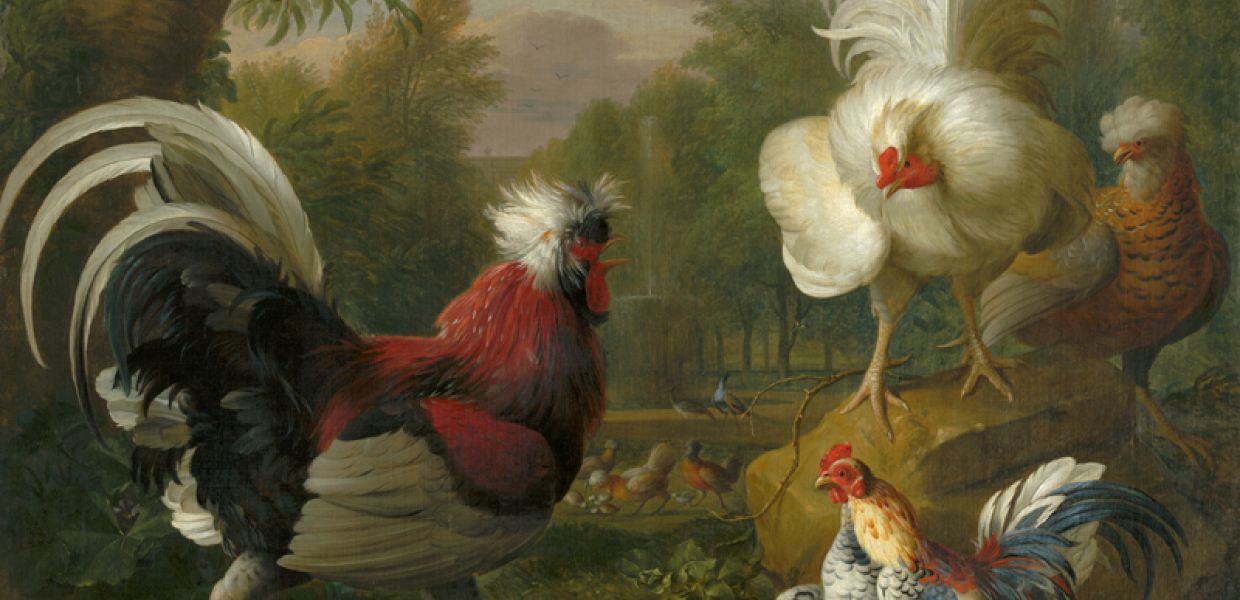Choosing a country's artworks for Europeana 280: Slovakia

Ministries of culture together with museums and galleries all over Europe have been busy selecting their top artworks for the Europeana 280 collection. Over the next weeks we'll be discovering a little bit more about how and why particular images were selected and the stories behind some of the choices.
Here, Europeana 280's Exhibition Coordinator Ann Maher chats to Slovakia about their nominations. We’ll start sharing the nominated works from each country soon - so stay tuned!
Identifying treasures in a collection and finding new ways for people to engage with culture are challenges faced by every museum, especially in a digital age. But, wondered our colleagues in Slovakia, in twenty years time would it be the same treasures as those we pick now?
So how did the country go about making their selection for Europeana 280? The Ministry of Culture of the Slovak Republic asked the Slovak National Gallery to coordinate the nominations. The concept of national masterpieces is something they give a lot of thought to in their own collections.
“The selection is partly based on the exhibition and catalogue 111 Works of Art from the Collection - a ‘best of’ from the collections of the Slovak National Gallery (SNG) - with an additional painting from the Central Slovakian Gallery”, explains Michal Čudrnák – Head of Digital Collections and Services, who coordinated the process at the Slovak National Gallery. But it could be a different selection in twenty years time, according to the curator of the 111 exhibition, Dušan Buran: “Just as art itself develops, our knowledge of art also changes and the criteria for a ‘masterpiece’ are also subject to constant change.”
Slovak art in an international context
The Slovakian nominations are an exceptionally wide-ranging selection covering art from many different periods, from Gothic art of the 15th century to conceptualism in the 1960s and 1970s. According to Michal Čudrnák, it was designed to place the Slovak collections in an international context: “The selection incorporates works from the old art collection, which can compete with the collections of foreign museums and galleries - if not in terms of quantity, definitely in terms of quality.” An example is a work by specialist bird and flower painter Jakob Bogdan. He left upper Hungary (now part of Slovakia), in the 1670s for Amsterdam and then moved to London, initially in connection with the coronation of the Statdholder William of Orange (for whom he worked) as King of England.

Zápas kohútov (1706/1710), Jakub Bogdan, Slovak National Gallery, CC BY.
After moving to London, Jakub Bogdan’s big break was his involvement in the decoration of Hampton Court from 1691-1694. He painted many pictures of birds, probably inspired by the famous aviary of his well-connected patron Admiral George Churchill, at Windsor. The selection for Europeana 280 was originally painted for Churchill.
It was also important to incorporate work from the modern and contemporary art collection: “paintings from our iconic modernist artists Ľudovít Fulla and Miloš Alexander Bazovský, and conceptualists like Rudolf Sikora and Július Koller,” he continues.
Watching over a nation
Ľudovít Fulla (1902-1980) is one of Slovakia’s most important creative figures and his work is central to Slovakian modernism. The theme of the Madonna with a child depicted in the Ľudovít Fulla selection from the Slovak National Gallery is a frequent motif in the work of Slovak modernist artists. As the curator of the collection of modern and contemporary art Katarína Bajcurová notes about the use of the Madonna and child motif, it can be highly symbolic: “A mother with a child becomes a Madonna associated with being ‘Slovak’ so that she not only metaphorically watches over the fates of individuals, but also the entire nation.”
What is Michal Čudrnák most looking forward to in the Europeana 280 collection? “It will be interesting to see our paintings in that context. Where the stylistic and historical perspectives with other collections overlap and where they diverge”. The SNG keep an eye on the global context of their own collections already: “Our online collection website Web umenia (edited by Lukáš Štepanovský), enables us to see the paths a selection of our artworks are taking online and sometimes they can be quite unexpected and illuminating.”
In an exhibition currently running at the SNG, visitors can have fun digitally ‘painting’ a Madonna created by another modernist, Mikuláš Galanda. “In its playful way, it exemplifies the democratisation of access to art and cultural heritage,” suggests Michal Čudrnák, “just as our institutions strive to publish high-resolution images of work in the public domain.”
We look forward to sharing (as widely as possible) more art selected for the Europeana 280 campaign soon. In the meantime, follow the conversation on Twitter via #Europeana280.
